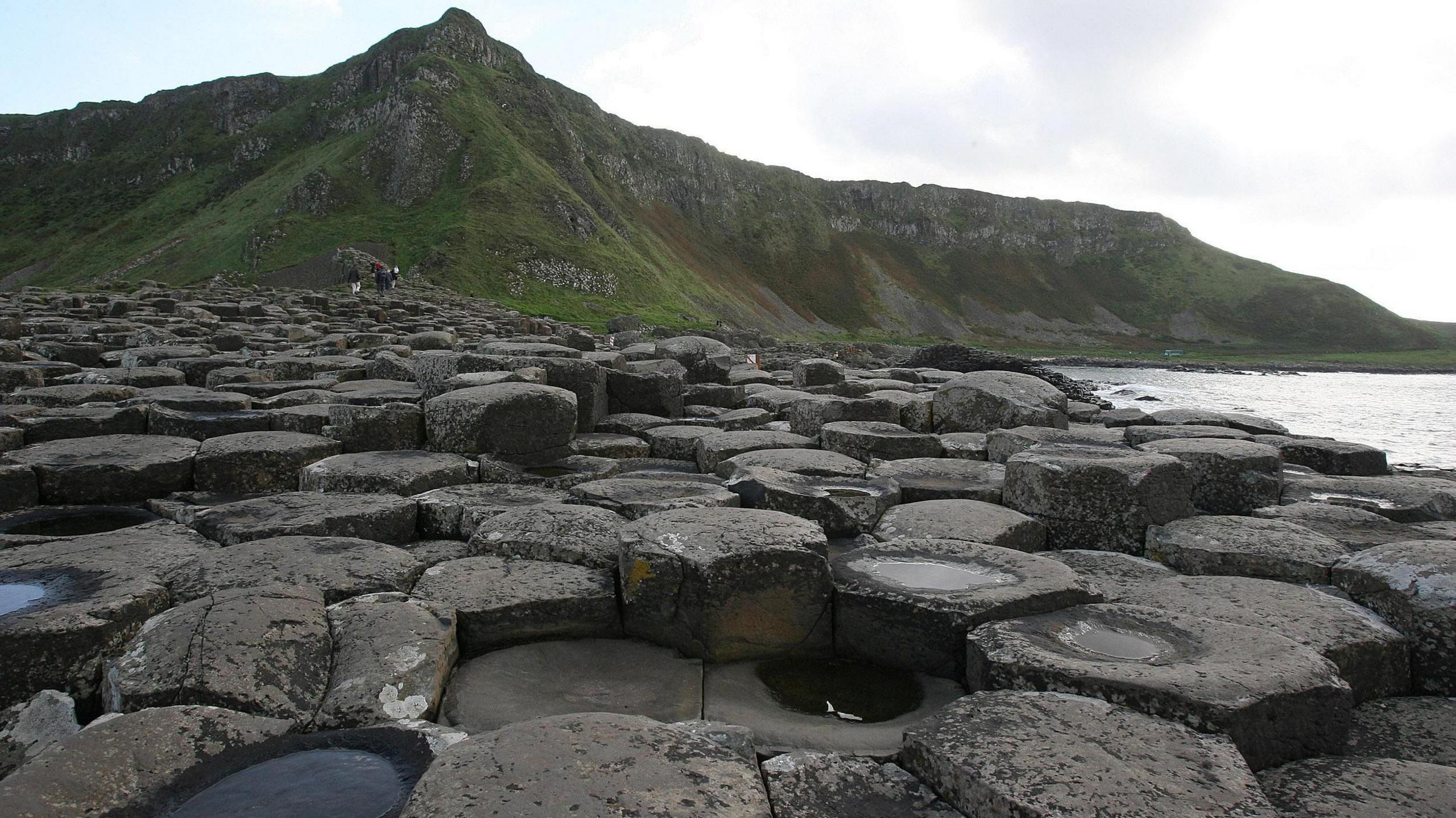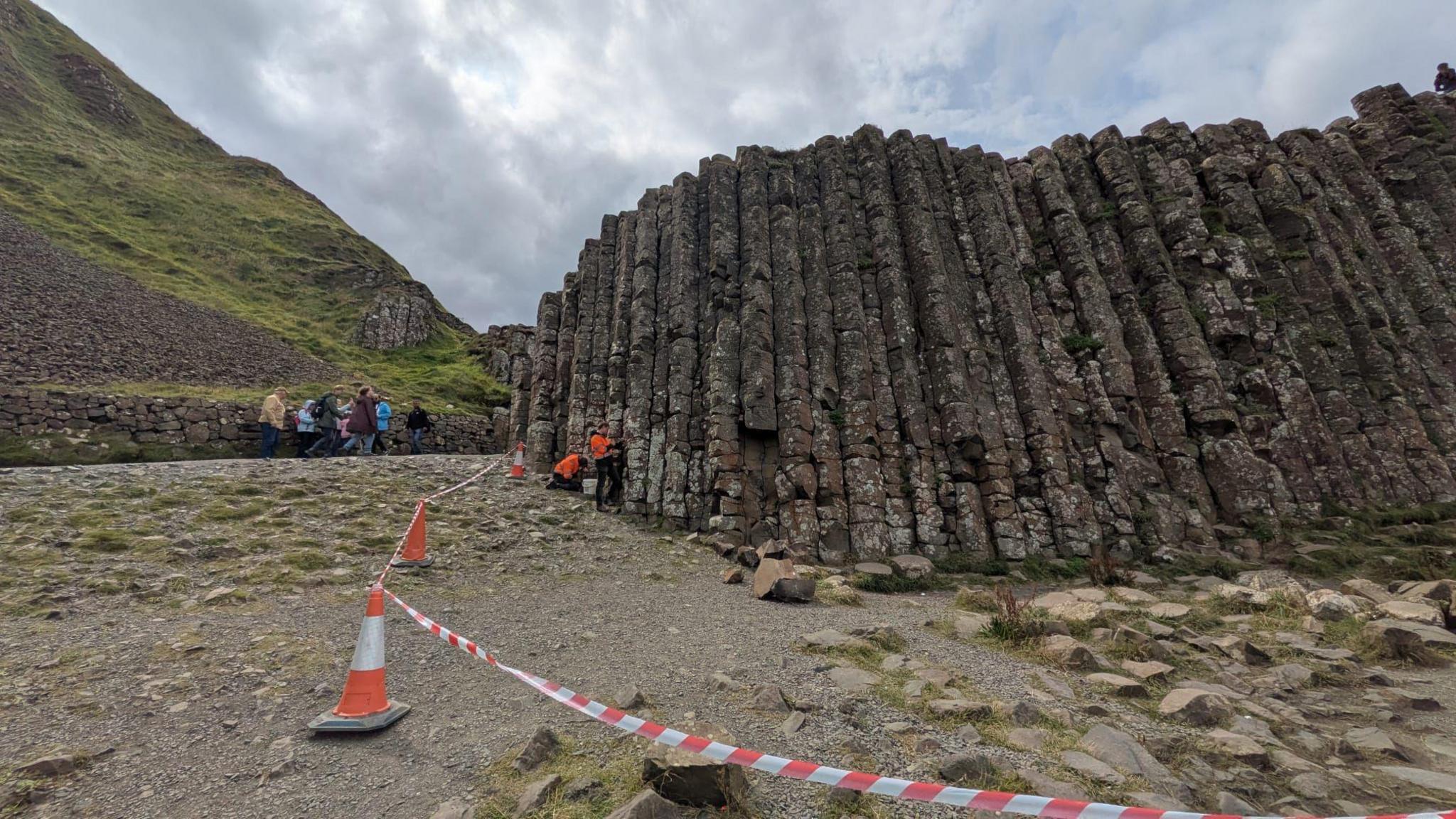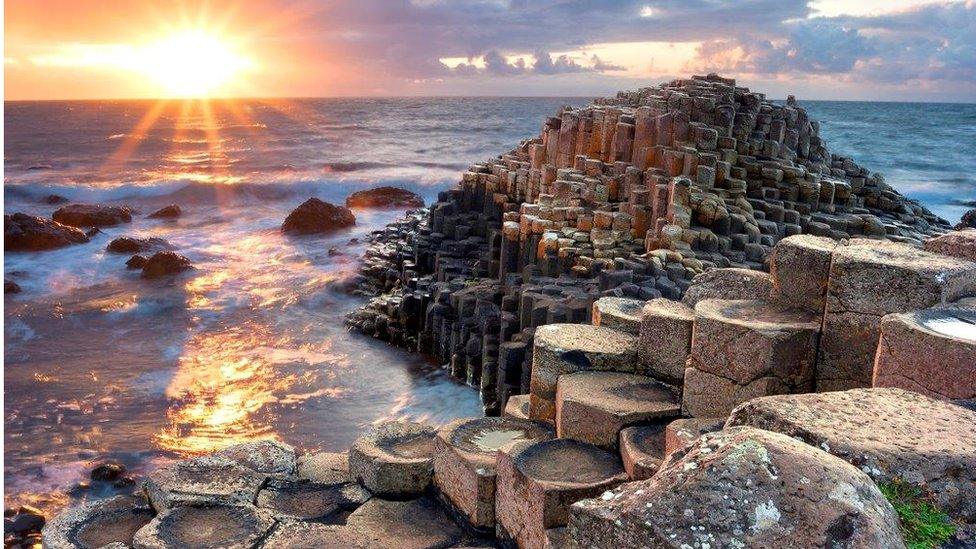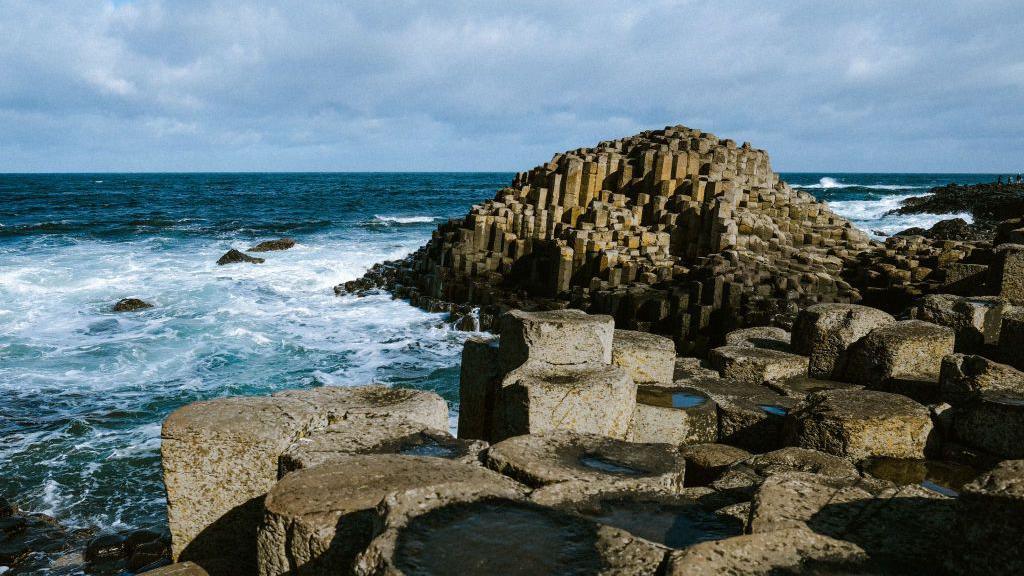Area cordoned off at Giant's Causeway after rockfall

The National Trust says the rockfall happened in the Loom area at the back of the Giant's Causeway
- Published
A rockfall has taken place at the Giant's Causeway, one of Northern Ireland's most famous sites.
A part of the Loom area of the Causeway, near Bushmills, County Antrim, has been cordoned off.
A spokesperson for the National Trust, which oversees the World Heritage Site, said "rockfalls do occasionally occur".
They said the incident was not related to the removal of coins that have been placed in rock crevices.

An area at the Giant's Causeway has been cordoned off
In May, the National Trust asked visitors to the site to stop placing coins in the crevices between the rocks because it was causing damage.
The charity said: "Although coin removal work was being carried out today, this activity and the incident are not related."
The Giant's Causeway became a United Nations Educational, Scientific and Cultural Organisation (UNESCO) World Heritage Site in 1986.
It was formed about 60 million years ago when volcanic eruptions created 40,000 basalt stone columns. As the ancient lava cooled, the stones formed into hexagon-shaped patterns.
In Irish mythology, the causeway was created by Finn McCool, an Irish giant, who wanted to prove his strength to Benandonner, a rival Scottish giant from across the sea.
Last year, the attraction received about 684,000 visits.
The numbers are steadily climbing back to their pre-pandemic levels. There were nearly a million visits in 2019.
Related topics
- Published4 July 2022

- Published17 September 2024

- Published13 August 2019

- Published19 December 2017

